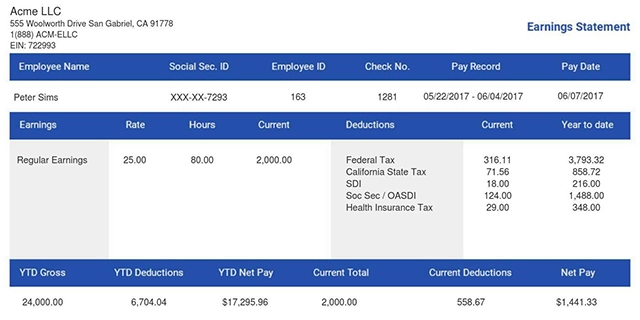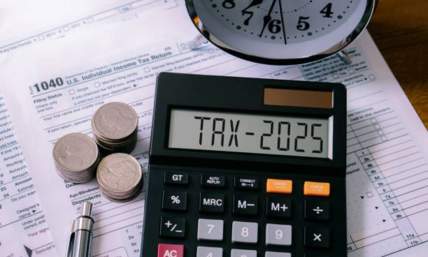How To Calculate Quick Ratio
Cash drives company operations and a lack of cash will ultimately render a company bankrupt. Thus, cash is required in order to pay for any expenditures such as employees wages, involvements and external purchases. If a company goes into illiquidity due to a lack of cash then they can become insolvent, rendering them unable to pay bills and expenses. Therefore, calculating the quick ratio is useful to ensure that this does not occur and that managers or investors can spot any cash flow issues that may occur.
Also read: Can I Pay Off My Mortgage Early?

What Is Quick Ratio?
Quick ratio is used as a financial indication of short-term liquidity. It is useful to determine a company’s ability to raise cash in order to pay any bills that are due within the following 90 days. It is otherwise known as the acid-test ratio, and it measures the company’s ability to pay any short-term expenses or bills. This ratio is defined by dividing quick assets by specific liabilities. In this sense, it is also known as the quick liquidity ratio.
Some of the most common terms used during this process include the following:
-
Quick Assets: This is the total of a company’s cash flow that derives from market accounts or savings accounts. Any treasury bills that mature within a 90 day period, as well as traded stocks are included. However, this doesn’t include any prepaid assets or inventory such as insurance which cannot be quickly transformed into cash.
-
Current Liabilities: These liabilities are defined as obligations that require payment within one year. They include wages, utilities, insurance, and taxes. Any long-term debt that needs repayment within the next year should also be taken into account.
Also read: What is a Bridge Loan?
How To Calculate A Quick Ratio Formula
There are two specific ways to calculate a quick ratio. The first is:
-
QR = (Current Assets - Inventories - Prepaid Expenses) divided by Current Liabilities.
-
QR = (Cash and Cash Equivalents + Accounts Receivable + Marketable Securities) divided by Current Liabilities.
The first of the formulas places emphasis on any items that are unable to be quickly transmuted into cash. Whilst inventories can be sold for cash, this process may take longer than a 90 day period. Thus, in an attempt to sell them quickly, you may need to sell them for a discount. Prepaid expenses include items such as insurance and any subscriptions the company may have. These expenses are not included in the calculation as they are unable to be used to pay any current liabilities. In theory, you can cancel any subscriptions and receive a refund, but this can take a long period of time and you may not receive the value of any prepaid subscription straight away.
The second of these formulas is equal to the first, however, it focuses on any items that are able to be quickly transformed into cash. The accounts receivable section may pose issues as you may have delinquent or unpaid accounts that have due dates for a period that is longer than 90 days. However in most cases, you will be able to receive any money within 90 days.
Also read: Checklist For Moving Into Your New House

How To Interpret Quick Ratio
Determining whether a quick ratio is good or bad depends on a variety of the following factors:
-
Industry: The average QR’s can vary drastically across different industries. Within an industry where cash flows are usually predictable, a lower ratio can be considered safe as revenue can be anticipated and relied upon for any future cash supply. Alternatively, in a more volatile industry, you will need a higher QR in order to secure the company against any potential future shortfalls.
-
Risks: Some company executives do not mind taking risks with regards to revenue, including risking a cash crunch. Therefore, they may find a low QR tolerable. Whereas, an owner within a more risky industry may require a higher QR.
-
Potential For Growth: A company that is rapidly developing may require a higher QR in order to pay for any investments or expansion that they have implemented. Whereas, a business that is steadier will be able to settle for a lower QR as they have established healthy and reliable relationships with lenders and suppliers.
-
Economic Circumstances: During periods of economic uncertainty, it is important to increase your QR in order to prevent any unforeseen pitfalls. Times of placidity do not require the QR to be as high.
-
Inventories: A company may require a certain type of inventory that is easier to liquidate without any discount. If this is the case, then the current ratio may be a good indicator of liquidity as the ratio will include any prepaid expenses as assets, whilst a QR does not.
-
Accounts Receivable: If this is hard to collect, you may wish to raise the company’s QR by placing aside some additional cash. If your accounts are more predictable, then you can usually lower the quick ratio.
-
Higher QR: If your QR is too high then some of your money is not being used proficiently. This suggests that you aren’t focusing properly on making company profits. If you do not have a special requirement for a higher QR, then you will need to lower it to an industry appropriate average.
Also read: How to Apply For a FHA Loan?
Frequently Asked Questions
Some of the most frequently asked questions about quick ratios include the following:
What Is An Acid-Test Ratio?
An acid-test ratio is the same as a quick ratio, it is just an alternative name. These terms are often used interchangeably and both ratios measure the businesses specific ability to pay for any short-term expenditure or liabilities. The formula for the QR and the acid-test is also exactly the same. The name that is used for these ratios will vary depending on the company’s individual preference.
What Is Classified As A Good QR Ratio?
A good QR is defined as any ratio that is greater than “1” as the company therefore has assets available to meet short-term payments. This ratio is dependent on the industry that the company falls within and the amount of obligations and external payments that they need to fulfil.
Economic conditions and the nature of the management team will also need to be taken into account as an unreliable management team will often negate the overall ratio. You should always keep an eye on the surrounding market and compare your QR, where possible, with other companies that fall within your chosen field.
This is not to say that you should become overwhelmingly competitive with other companies, however, it is good business practice to keep an eye on the overall performance of those who you share an industry with. You should also attempt to communicate with other companies, where possible, in order to establish lasting business relationships that may benefit you during any periods of shortfall. The vast majority of business owners will understand how hard it is to keep a business profitable and operational and thus, they may be able to lend a hand and guide you towards appropriate investment decisions at the right time.
Also read: How to Apply For a FHA Loan?

What Is The Difference Between A Current Ratio And A Quick Ratio?
Both of these ratios are measurements of a company’s liquidity. The key difference between these two ratios is that the formula for calculation of a current ratio includes inventories and prepaid expenditure within the numerator, whereas the calculation for quick ratios does not require this. QR leaves these specific items out of the calculation because they are not typically available in order to pay short-term liabilities within a 90 day period.
Therefore, if you are required to make a debt payment within 90 days, you will not be able to access the relevant cash flow in order to do so. Calculating the QR is far more useful when determining any subscriptions that you can cancel and be refunded or any immediate expenditure that you can cut back in order to channel your cash flow elsewhere.
It is important to calculate both of these ratios, especially the QR if you are planning on making any short-term payments within 90 days. Doing this will ensure that you stay on track of your company’s finances and are aware of how much cash you should be generating in order to maintain profitability and avoid liquidity.
Conclusion
To conclude, companies can drastically improve their QR’s by placing more of their overall net profits into cash form. They will also be able to reduce any liabilities by cutting subscription and unneeded expenses whilst repaying any immediate debts.
Alternatively, if their QR is far too high, then they should consider investing into projects that will enable the business to expand and become more efficient. From a lender’s perspective, the higher the QR is, the more likely they are to invest. A higher quick ratio is usually an indication that the borrower will make reliable interest payments regardless of whether the business encounters any extra expenses or shortfalls.
Overall, calculating the QR for your company is the best way to keep up to date with the profitability of your business and its overall position within the industry.
A free paystub generator is a great, affordable way to create custom paystubs.















